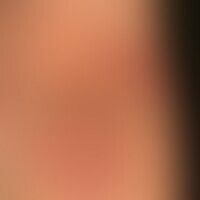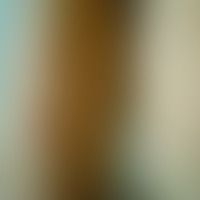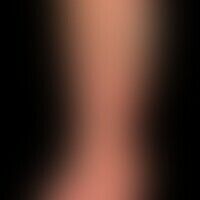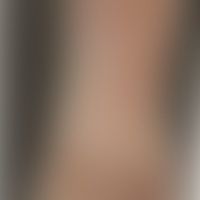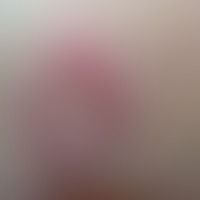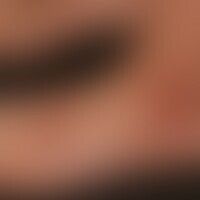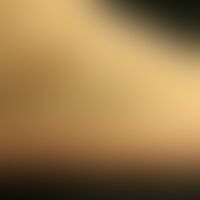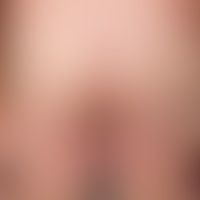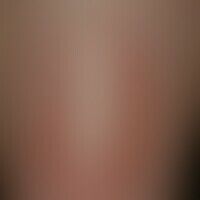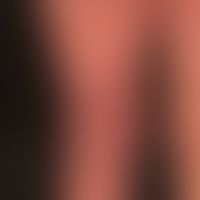Image diagnoses for "Plaque (raised surface > 1cm)", "Leg/Foot"
181 results with 457 images
Results forPlaque (raised surface > 1cm)Leg/Foot
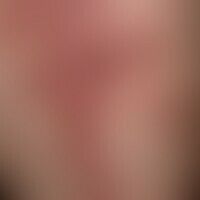
Hypertrophic Lichen planus L43.81
Lichen planus verrucosus: detailed view of the distal parts. marginal smaller partly solitary parts aggregated reddish shining papules. crusts caused by scratching effects (indication of the obviously "punctual" localized itching). the blown off parts point to atrophic areas (scarring).
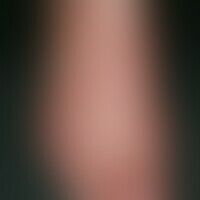
Contact dermatitis allergic L23.0
Contact dermatitis allergic: chronically recurrent, massively itching, disseminated red papules and papulo vesicles confluent to blurred plaques. maceration of the 4th CCC. The skin lesions were caused by application of a gentamicin-containing cream.
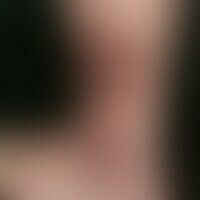
Hypertrophic Lichen planus L43.81
Lichen planus verrucosus. numerous, chronically stationary, 0.5-5.0 cm in size, rough, brownish or brownish-red, disseminated or confluent, rough, wart-like plaques as well as severe itching in a 63-year-old woman. onset of symptoms about 6-7 years ago. known CVI for 10 years.

Lichen sclerosus extragenital L90.0
Lichen sclerosus extragenitaler (and genital): small and large, partly sharp and partly blurred bordered spots and plaques with parchment-like surface; in the area of both popliteal fossa coarse lamellar scaling.
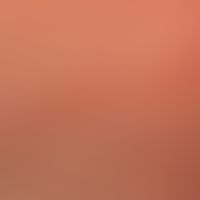
Larva migrans B76.9
Larva migrans. Characteristic, itchy, linear gait structures on the sole of the foot.
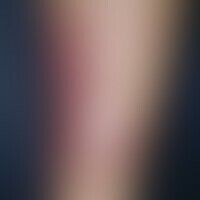
Nodular vasculitis A18.4
erythema induratum. inflammatory, moderately painful, red to brown-red, subcutaneous nodules and plaques. size 2.5 cm, rarely up to 10 cm. often deep-reaching, necrotic melting with subsequent ulceration. chronic course over several years possible. healing with the leaving of brownish scars.
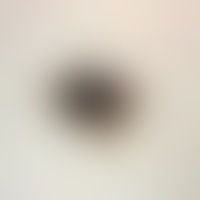
Spindle cell tumor, pigmented D22.L
Pigmented spindle cell tumor (nevus reed) - dermatoscopic picture: asymmetric, central structureless. in the periphery pseudopodia, lines and reticular lines are possible. differential diagnosis: melanoma. picture from the collection of Dr. Michael Hambardzumyan.

Insect bites (overview) T14.0
Insect bites (superinfected): about 14 days old, initially urticarial-blistery reaction, now plaque-shaped, itchy with central circumferential pustule and crust.
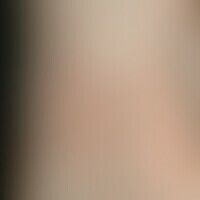
Tinea pedis (overview) B35.30
Tinea pedum. general view: Discrete, well-defined, heart-shaped, slightly scaly hyperkeratosis and erythema on the right foot back of an 80-year-old female patient with exacerbated tinea pedum.
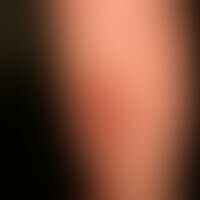
Necrobiosis lipoidica L92.1
Necrobiosis lipoidica: confluent, reddish-brownish, reddish-brownish, centrally clearly atrophic plaques that have existed for about 2 years, gradually increasing in size, sharply defined, confluent plaques with conspicuous edges, increase in consistency over the entire plaque.
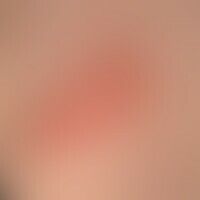
Nevus sebaceus Q82.5
Naevus sebaceus: 1.8 x 3.2 cm in size, existing since birth, slightly raised, slightly increasing, skin-coloured plaque on the right thigh of a 3-month-old girl; numerous telangiectasias are conspicuous.
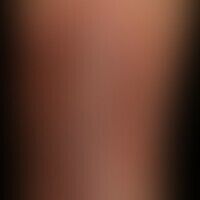
Tinea cruris B35.8
Tinea cruris: inflammatory plaque with a smooth, tense surface and follicular crusts.
